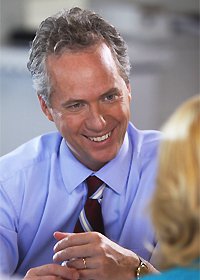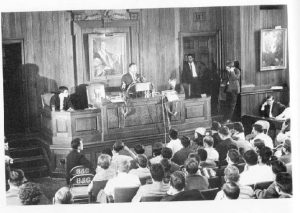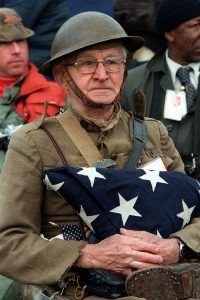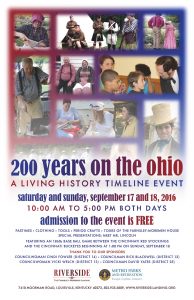 In an effort to ensure Louisville’s public art and monuments not only tell our history but also showcase our community values, Mayor Greg Fischer announced steps to establish principles for such works, while creating additional opportunities for artists to explore issues of race, discrimination, xenophobia and values.
In an effort to ensure Louisville’s public art and monuments not only tell our history but also showcase our community values, Mayor Greg Fischer announced steps to establish principles for such works, while creating additional opportunities for artists to explore issues of race, discrimination, xenophobia and values.
“Art plays an important role in not only telling the stories of our past but vividly highlighting who we are and who we want to be,” Mayor Fischer said. “2017 has highlighted the immense amount of work left to do to create a country where liberty and justice are enjoyed by all citizens, regardless of race or creed.”
The city’s plan includes:
Mayoral Advisory Committee to Establish Principles for Louisville’s Public Art and Monuments: This newcommittee will begin work in January 2018 on what is estimated to be a six-month process. The committee members will be appointed by the Mayor and include representation from the city’s Commission on Public Art (COPA). Members will determine their meeting schedule and methods; meetings will be open to the public. The culmination of the Committee’s work will be a report to the Mayor.
Reclaiming Public Spaces for Untold Stories Louisville Public Space Art Fund Grant Opportunity: Recent community conversation and public input have highlighted the need for artwork that celebrates Louisville’s current cultural values. Through funds allocated via the fee-in-lieu option in the Land Development Code, COPA will offer a grant opportunity, inviting artists and nonprofit organizations to submit public art proposals that focus on untold stories and reflect our community’s current cultural values. Louisville Metro Government (LMG) is also looking for community and foundation partners to grow this fund and expand the work.
Metro Hall Rotunda Art Exhibition: For the past several years, LMG has contracted with Louisville Visual Art to curate and install exhibitions of local artists’ work in public spaces within Metro Hall. The 2018 exhibition provides a timely opportunity to utilize this platform for art exhibits, and an exhibition titled “HEROES” will include artwork that responds to historical and present injustice and our community’s future, with visual representations of everyday heroes by Louisville-based artists. A public event will be held to introduce the artists and encourage discussion of their works.
Additional programming and events that give Louisvillians the opportunity to learn, discuss and explore the history around race and discrimination in our city and nation will be announced early next year, the Mayor said.
These efforts continue the Mayor’s nationally recognized work in building Louisville as an international city through the Office for Globalization and as a showcase city for racial equity through programs like BeTheOne, Black Male Achievement, Louisville Promise and many others.
“It’s important to remember that we are not responsible for a history created before we were born or when we were children,” Mayor Fischer said. “We are responsible for knowing that history, understanding its impact, and creating our own legacy for the people of Louisville today, tomorrow and beyond. I believe these efforts will make us stronger.”
 The University of Louisville’s Brandeis School of Law is marking the 50th anniversary of Martin Luther King Jr.’s visit to the school with a free, public celebration today.
The University of Louisville’s Brandeis School of Law is marking the 50th anniversary of Martin Luther King Jr.’s visit to the school with a free, public celebration today.
The noon – 1:30 p.m. event in Room 275 at the law school will feature a speaker panel including Stephen Porter, a 1968 law school graduate who invited King to speak at UofL in 1967. Porter, a local attorney, will share his memories of the event and discuss King’s legacy. Other panelists will be professors Ricky Jones, Pan-African studies, and Cedric Powell, law.
“He loved to speak at colleges,” said Porter in a 2014 UofL video about King’s visit. “As a matter of fact, the ‘I Have A Dream’ speech, he gave that dozens of times before he gave it in Washington and he gave it mostly to college groups.”
According to researchers in the law school, King came to Louisville many times during the 1960s but March 30, 1967, was the only time he visited UofL.
In 2014 the university unveiled never-before-seen photos of King’s law school stopover. The photo negatives were found among some old files and records. Those photos were reprinted and are now part of a permanent exhibit in the foyer of the school’s Allen Court Room.
“This was not a very big room, so there were people outside, people literally hanging from the windows,” said Porter, recounting the overwhelming student interest in the event.
Another university MLK-focused 50th anniversary celebration will be hosted April 4 by the Anne Braden Institute for Social Justice Research. That event marks the anniversary of the civil rights leader’s notable anti-war speech. The 11:30 a.m.-1:30 p.m. event will feature a reading of the speech; an open house will follow from 4:30 to 6 p.m.

Joseph Ambrose, an 86-year-old World War I veteran, attends the dedication day parade for the Vietnam Veterans Memorial in 1982. He is holding the flag that covered the casket of his son, who was killed in the Korean War. Photo: Department of Defense.
Though it is often confused with Memorial Day, Veterans Day is a day to celebrate and show thanks for all veterans – living and deceased. Unlike many holidays, it is always celebrated on a specific date: November 11. If you ask someone on the street why we celebrate Christmas on December 25, they likely know the answer. Ask that same person why we celebrate Veterans Day on November 11, they will likely not know the answer. Why is Veterans Day celebrated on November 11?
11:00 AM, November 11, 1918 is the day that the Allied Powers signed a ceasefire with Germany to end World War I. This marked the end of the fighting, but the signing of the Treaty of Versailles in June of 1919 marks the official end of the Great War. The United States joined the war effort well after the war had started. 53,402 American soldiers died in combat or were declared missing in action. A total of close of 117,000 American soldiers died during the war effort from all causes and another 204,000 were wounded. The large majority of the deaths were actually due to disease, including many from the infamous 1918 flu pandemic. In total, the world saw a loss of close to 11 million military personnel and 6 million civilians (this number does not include those who died as a result of the influenza pandemic). This accounted for approximately 1.5% of the world’s population at the time (the 1918 influenza pandemic killed an additional 20 – 40 million people worldwide over the course of two years).
The following year, President Woodrow Wilson signed a proclamation that declared November 11, Armistice Day. Wilson is quoted as saying, “To us in America, the reflections of armistice Day will be filled with solemn pride in the heroism of those who died in the country’s service and with gratitude for the victory, both because of the thing from which it has freed us and because of the opportunity it has given America to show her sympathy with peace and justice in the councils of the nations…”. The original celebration started with two minutes of silence (or suspension of business) at 11:00 AM and was followed with parades and other public displays.
The holiday gained more attention in 1921, when on Armistice Day, President Harding presided over the funeral of a World War I serviceman who had died overseas, but remained unidentified. The casket was shipped from France to Arlington Cemetery. This is now commonly known as the Tomb of the Unknowns. To show the importance of this ceremony, it was also attended by two other living Presidents: Taft and Wilson. This was the first public ceremony in the nation’s history that was attended by three Presidents. Finally, in 1938, Congress approved an Act that made November 11 an official holiday and was dedicated to remembering those who served in the war and to promote world peace.
In 1954, following World War II and the Korean War, Congress amended the 1938 Act and declared November 11 to be Veterans Day. President Dwight D. Eisenhower issued the very first Veterans Day Proclamation: “On that day, let us solemnly remember the sacrifices of all those who fought so valiantly, on the seas, in the air, and on foreign shores, to preserve our heritage of freedom, and let us reconsecrate ourselves to the task of promoting an enduring peace so that their efforts shall not have been in vain.” World War II saw 405,399 American soldiers die and close to 671,000 injured. This is a small portion of the estimated 21-26 million soldiers world-wide who died. As with any war, there were also massive civilian causalities during World War II: an estimated 60 – 65 million people died world-wide as a result of this conflict (approximately 3% of the world’s population). World War II is still the deadliest conflict in the world’s history. The Korean War started only five years after the end of World War II and American’s saw another 55,000 soldiers die and another 103,000 injured.
In 1968, the Uniforms Holiday Bill passed and Veterans Day was moved to the fourth Monday in October, essentially to ensure that federal employees would have a three day weekend for the federal holiday. The new date was first observed in 1971. Since holidays are technically left to the states to recognize, many states continued to observe Veterans Day on November 11. This was a short-lived change, and President Ford signed a law in 1975 to change the date back to November 11, starting in 1978. In 2001, Congress passed a resolution making the week of Veterans Day, a week long celebration. It has been celebrated as a week-long event since then, with a focused effort to help school children understand the importance of veterans. This is not a holiday that is unique to the US either. Many countries have a day to celebrate and honor their veterans, such as: England, Canada, France, Belgium, New Zealand, Australia, Serbia, Netherlands, Norway, Italy and Denmark. England, France, Belgium and Canada celebrate on November 11 as well, in honor of Armistice Day.
As with Memorial Day, Veterans Day is a day to remember the deceased who died fighting for our country and our freedoms, but it is meant more to honor the living who served this country. Those that chose to fight for the freedoms we enjoy here and in many cases, to fight for people in other countries who need help. Not including the current Global War on Terror, close to 42 million American men and women have served in the armed forces. Of these, more than 40 million are living (the oldest of which, served in World War II). If we add in the veterans from the Global War on Terror, there are a total of approximately 44 million living veterans. This means that veterans account for about 14% of the entire US population. To put this number into perspective: the population of California, the most populous state in our union, is around 39 million. While you’re thinking about what selfie that you want to post or what tweet to send out, remember why you are able to post those selfies and tweets for everyone to see. Take a moment to ask yourself, would you be: willing to fight for your right to free speech, willing to fight for your right to worship in the way you choose, willing to fight for your right to vote on election day, willing to fight for others to be able to do the same? Whatever your answer to those questions may be, know that the men and women in uniform fight for your rights and freedoms daily. When you see a veteran, not just on Veterans Day, take a moment to thank him or her for their service.
The Kentucky Historical Society (KHS) today announced six new research fellows. Each fellow will receive monetary support to conduct research for a time of one to four weeks at KHS in Frankfort.
Recipients include:
Fall 2016 Scholarly Research Fellowships
- J. Matthew Gallman, University of Florida, “Kentucky Democrats and Family Politics: The Strange Case of ‘Willie’ Weller
- Robert P. Murray, Mercy College, “Slavery Times in Kentucky Redux”
- Jonathan W. White, Christopher Newport University, “Abraham Lincoln and the Slave Trade”
2016 Oral History Research Fellowship
- Rebecca Hasselbeck, University of California – Irvine, “Behind the Tracks: Social and Labor Relations in the United States Horse Racing Industry”
2016 Churchill Weavers Fellowships
- Ricki Dwyer, independent scholar, “Weaving in Contemporary Culture”
- Maggie Leininger, University of Louisville – Hite Art Institute, “Churchill Weavers and Textile Industrialization”
The Research Fellowship Program is funded by the Kentucky Historical Society Foundation. The program encourages and promotes advanced research on all aspects of Kentucky-related local, regional, national, transnational and comparative history using KHS collections. More information is at history.ky.gov/research-fellowships/.
 The free family event, 200 Years On the Ohio: A Living Timeline Event, will take place this weekend, Saturday 17 September and Sunday 18 September.
The free family event, 200 Years On the Ohio: A Living Timeline Event, will take place this weekend, Saturday 17 September and Sunday 18 September.
The event will feature exhibition of clothing, tools, pastimes, weaponry and cooking from Louisville’s historic timeline.
Highlights of the educational event include a late 19th century “base ball” game on Sunday, September 18 at 1:00 PM between the Cincinnati Red stockings and the Cincinnati Buckeyes.
Attendees will also have the opportunity to meet Mr. Lincoln as portrayed by Dennis Boggs as well as a “fashion show” featuring the clothing from various periods throughout Louisville’s history.
 Weather
Weather Traffic
Traffic @LouisvilleDispatch
@LouisvilleDispatch @LouisvilleDisp
@LouisvilleDisp Subscribe
Subscribe
